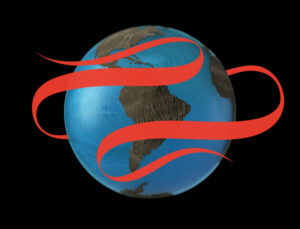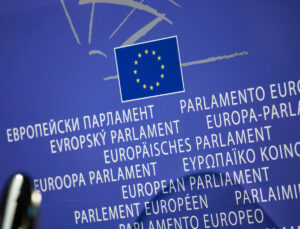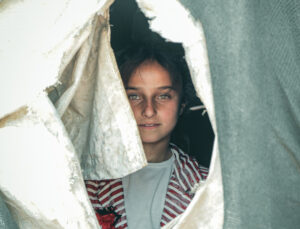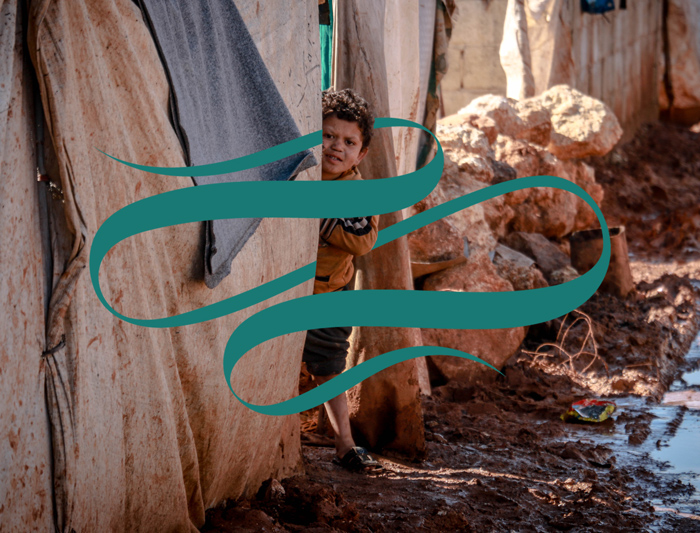
The current picture
We live in a troubled world. Mistrust between and of governments, corrupt government officials, failed states, growing authoritarianism and transnational crime, territorial disputes and conflict, proliferation of arms including nuclear weapons, increasing divide between rich and poor, unbridled market exploitation, intolerance and discrimination, are playing out around the globe. While there is historical evidence that we live in an era of relative peace compared to the long view of history, the stakes of war and conflict today in our globalized world creates a heightened dimension of uncertainty and terror. As a result, the world is experiencing increasing numbers of forcibly displaced persons. The many challenges concerning how migrants, refugees and other displaced humanity should be dealt with is a dominant issue of our times.
In response to increasing numbers of refugees and migrants, with some exceptions, borders are increasingly guarded and shut to those who lack the means or opportunity to cross them. Meanwhile demands by individuals requiring international protection keeps growing. People who flee – men, women, children in all their diversity – because of serious human rights violations and risk of harm perpetrated by conflict, or within communities, from government agents, or even family members, in the absence of protection normally provided by the state, is a phenomenon humankind has experienced since antiquity. No nation state has been unaffected by forced displacement. Massive refugee movements over the last hundred years during two world wars, regional and inter-state conflicts, and countless civil wars and uprisings, have regrettably not led to a more effective system of prevention. While we have seen the adoption of specialized treaties and norms addressing refugees, notably the 1951 Refugee Convention and 1967 Protocol, the 1969 Organisation of Africa Unity Convention, and 1984 Cartagena Declaration, exponential growth in related human rights laws, non-binding instruments, global institutions and the non-governmental sector, the complexities and problems of today are as challenging as ever before.
Some 60 million people were uprooted during the second world war, which we thought or hoped would never be replicated. Today, the Office of the UN High Commissioner for Refugees (UNHCR) has a planning figure of 102,575,070 persons of concern, of which 21.8 million (21%) are recognized ‘refugees’, and 4.8 million (5%) are ‘asylum seekers’ (persons awaiting determination of status). Internally displaced persons (IDPs) (those displaced within a country of origin who have not crossed an international border) are estimated at 52 million (51%). In addition, there are some 4.6 million stateless persons around the globe.
Who takes responsibility and why people move?
Eighty-six percent of the world’s refugees, asylum seekers, stateless, and IDPs reside in the Global South. That is unlikely to change. Only 20 countries, out of a global total of 195 nation states, are hosting more than 75% of the world’s refugees, with 16 of those on the list in 2016. Of the 10 countries that received the most refugees per capita during the period 2011-2020, only one western country, Sweden (2.6%), made the list. Others include Lebanon with 19.5%, Jordan 10.5%, Turkey 5%, and Liberia and Uganda, with 4.1 and 3.7% respectively.
With increasing climate change and its effects, even more people are on the move. Extreme weather events, including floods and droughts, earthquakes, and massive forest fires, are phenomena that affect us all. As former US vice-president Al Gore once said, “There is No Planet B”. And Mother Earth is hurting. A 2018 World Bank study predicted that in the absence of urgent global and national climate action, Sub-Saharan Africa, South Asia and Latin America could see more than 140 million people move within their countries’ borders by 2050. Today, in some regions of Central America and Sub-Saharan Africa, the existential threat of having no access to land, water, food, or gainful employment, is often too much to bear. So people leave.
International IDEA has reported that for the fifth year in a row, the number of countries heading towards authoritarianism outnumbered those experiencing growing democratization. Their 2021 report identified 98 countries classified as democratic, 20 hybrid countries (i.e., slipping away from democracy towards dictatorship), and 47 clearly authoritarian. The latter two categories constitute 70% of the world’s population, or some 5.6 billion people. Faced with an unhospitable government or environment, or both, leaving one’s homeland may be the only reasonable decision out of few good options.
What is different today is that people can travel with relative ease, as need be facilitated by vast networks of traffickers and smugglers. Voting with your feet and crossing borders with the hope of not getting caught has never grown old. The US Border Patrol reported an estimated 1.6 million “encounters with migrants” (meaning expulsions and apprehensions) along the US-Mexico border in 2021. In 2019, the UN’s International Organisation for Migration (IOM) noted that less than 125,000 migrants and refugees reached European shores after crossing the Mediterranean, a downturn from the 1 million who arrived in 2015. Lower numbers of asylum seekers arriving in Western countries are due to a variety of factors, including pandemic restrictions, stricter border enforcement and pushback measures, often funded and supported by Western governments. In 2019, UNHCR reported that 6 people died every day attempting to cross the Mediterranean. Countless other lives are lost in similar circumstances around the globe. The poorest of the poor always suffer most.
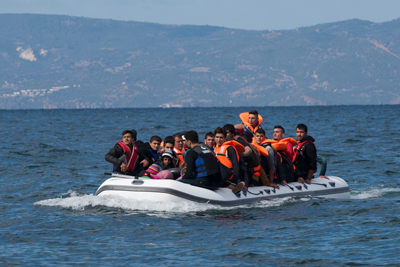
Many individuals attempting to reach the Global North fearing violation of their human rights are legitimate asylum seekers who should have their cases heard and considered. For those who need and deserve international protection it should be granted. Many individuals on the move have mixed motivations for fleeing including seeking employment, safety and security, and a better future for themselves and their families. Whatever the motivation, destination countries are obliged to deal with all persons in a humane manner based on rule of law consistent with international human rights norms. Regrettably, laws and regulations including universally applicable human rights principles are often disregarded when deemed politically expedient.
Resistance and challenges in the Global North
An increasing number of governments in the developed world are unwilling, or claim they are unable to support refugees and migrants arriving at their borders or shores. While nothing new, we are experiencing how “let’s get tough” slogans and policies can carry or turn elections. The political debate is no longer between progressives and conservatives, if it ever was, when there is a new crisis at the doorstep or in the making every other week. Concerns about how states with elaborate and costly social welfare systems can continue to receive significant numbers of migrants while keeping voters on-board, is a riddle with no easy answer.
Numbers of migrants and asylum seekers, whether real or imagined, both voluntary and otherwise, clearly impacts government policy making. While much attention is paid to countries such as the United States, Lithuania, Poland, Spain or Israel building walls, the array of measures governments invent and take to deter, dissuade, and control borders is seemingly endless. We have reached a point of global hypocrisy whereby countries highlighting the human rights shortcomings of others, quietly bankroll aggressive unlawful measures in foreign lands that knowingly and routinely abuse migrants. Some governments readily export, through material or other support, models of offshore processing and long-term immigration detention. Still others, claiming to favour certain refugee groups to win political support at home, then turn around and instruct their navies to intercept and push back boats of desperate asylum seekers trying to reach their shores. Sadly, no country is unliable from such behaviour in its history.
International (in)action and budget priorities
Hailed as major diplomatic breakthroughs, the Global Compacts for Refugees and Migrants adopted by the UN General Assembly, apart from generating a plethora of meetings and reporting requirements since their adoption three years ago, have not resulted in considerable change or improvement to the global system of protection and assistance, most notably in the areas of equitable and predictable responsibility-sharing. Pledges and commitments from governments, civil society organisations, and the private sector, would still be present without these Compacts. The perceived need for developing fresh non-binding approaches in the refugee field, and the abundance of fora, branding, and self-promotional activities they generate, costing tens of millions of dollars, with UNHCR as head cheerleader encouraged by a handful of donors, makes us feel like progress is being made. But that is not the case according to recent evaluations.
Indeed, UNHCR’s own indicator report on the Global Compact for Refugees provides a sober picture. In 2020, 16 million refugees were in protracted displacement situations, which means encampment for 5-years plus. The average duration of a refugee situation is now 20 years. Two-thirds of the world’s refugees live in poverty. Only 1 in 100 refugees globally found a solution: the three traditional solutions being repatriation, local integration, and third country resettlement. Humanitarian assistance provided by UNHCR, other UN entities, and governments and NGOs, helps mitigate or reduce exposure to starvation or further harm. But many refugees fall through the cracks. While mitigating losses and maximizing assistance are reasonable objectives, the international community can and should do better.
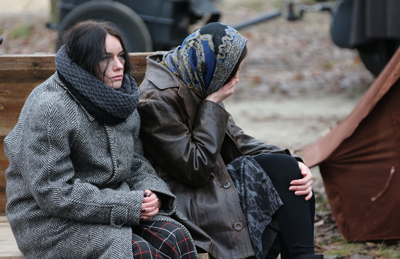
A starting point is how we prioritize global public expenditure. Total overseas development assistance (ODA) to refugee situations globally is US$ 22.3 billion (bn). The top ten donors, led by the United States ($3.6bn), Germany ($2.4bn), and EU ($2.1bn), make up 50% of that total. Meanwhile, global military spending reached $1.981 trillion (that’s 12 zeros!) in 2020, an increase of 2.6% in real terms from 2019. Representing 62% of this overall expenditure, the five biggest arms buyers are the US, China, India, Russia, and United Kingdom. All but India are permanent members (PMs) of the UN Security Council, with India being a current rotating (two-year term) member of the 15-member Council.
UNHCR has some 17,800 employees spread across 132 countries worldwide, while the International Organisation for Migration (IOM) has 15,300 staff. An intriguing comparator is New York City’s (NYC) budget for the NY Police Department, which in fiscal year 2021 was $10.9bn, with some 55,000 officer and civilian employees. Today NYC’s budget is $100.6bn.
All to say, global ODA supporting refugees and related global staffing for the principal UN entities dealing with refugee displacement and related migration issues is not overly large.
While more resources are no panacea, adequate funding and human resources certainly helps. A joint World Bank-UNHCR report estimated that the annual cost of providing access to basic education to refugee children in low and middle-income countries was US$4.85 bn, with an additional $4.42 million to educate all Palestinian children under the mandate of UNRWA. This total sum is equivalent to what one company, the UK-based luxury car and aeronautic and marine power systems manufacturer, Rolls Royce, made last year.
In addition to funding challenges, there are several structural limitations on the UN Refugee Office as 98% of its annual budget is financed by voluntary contributions from some twelve industrialized states, with currently 40% from the United States and another 34% from the European Union and its member states. In 2004, UNHCR’s Executive Committee (ExCom) – essentially its state-run governing board – had 60 members, and today there are 107. While increased ExCom membership may appear like a positive development, it also serves to further politicize this body. Several ExCom member states are not parties to the international refugee instruments and thus consider they have no formal international legal obligations to provide protection to asylum seekers and refugees. They nonetheless get a seat at the table.
Another concern and challenge are that with the growth of forced migration globally, added pressure has been put on UNHCR to deal with an increasing number of complex and large-scale emergencies and long-term crisis and humanitarian situations which puts extraordinary demands on the Office. This has led to placing staff at risk with an ever-increasing number of humanitarians being harmed and killed. Furthermore, UNHCR is being asked to find ‘solutions’ to refugee problems which would not formally require states, especially those in the West, to receive significant numbers of refugees on their territories. As a result, UNHCR must tread the fine (and often shifting) line between being diplomatic, pragmatic, and principled while at the same time keep donors happy.
The challenges surrounding refugee flows and protection measures never end, with regular reports of attacks on humanitarians and humanitarian spaces contrary to international law and basic elements of human decency. Some non-state actors and their disregard for following any rules at all, are an increasing concern. The recent attack on a displacement camp of 20,000 persons in Bunia, Democratic Republic of Congo, which left 60 civilians dead, while ostensibly protected by UN peacekeeping troops, is another sad story of depravity. The tens of thousands of Afghan women, men and children now left hungry and unprotected in Afghanistan after the international coalition withdrawal in August 2021 has exacerbated another man-made humanitarian crisis. Whether the Taliban leadership will ever be able to deliver a legitimate and responsible form of governance and protect the Afghan people, remains uncertain. In the meantime, one-third of the Afghan population of some 39 million people relies on humanitarian aid for their next meal. Now in the middle of Europe, escalated conflict in Ukraine with the Russian military invasion and threat of nuclear weapon use is resulting in massive internal and cross-border displacement and growing loss of life.
These unsettling developments are all too common in today’s world. A world that is literally burning up from a shifting global climate that only increases the risks, uncertainties, hardship, and conflict that we face.
